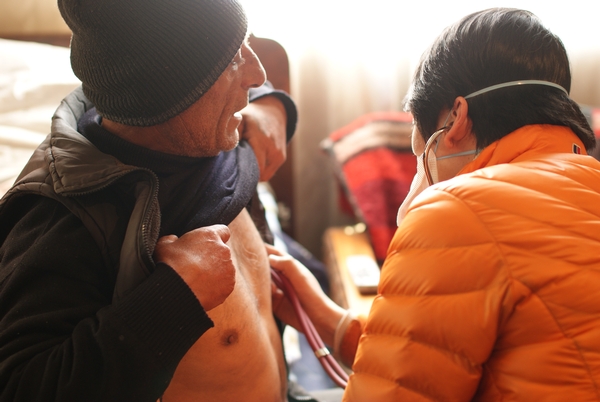 Stool can get so hard that clinicians need to pull on a glove and dig it out. It happens most often in very old, demented patients. They pull their knees up into their tummies, we slip ‘blue pads’ under the business end, and a nurse or physician starts working at the blockage.
Stool can get so hard that clinicians need to pull on a glove and dig it out. It happens most often in very old, demented patients. They pull their knees up into their tummies, we slip ‘blue pads’ under the business end, and a nurse or physician starts working at the blockage.
It takes muscle. You lean low over the bed, left hand on the patient’s right hip, and dig deep with your right hand. Success brings relief for patients and makes a huge mess of the bed.
No one fights for bowel disimpaction on his or her scope of practice.
Nurses used to disimpact bowels in the ED. They know how. Now nurses usually say, “That’s not within my scope of practice”.
You never hear “That’s not within my scope of practice” for fun things. Prescribing medications, discharging patients, applying splints, and patient education are aggressively pursued.
Premier Wynne wants to increase nurses’ prescribing scope.
Pandering to unions does not improve wait times or patient care. If Wynne wanted to really improve patient care by changing nursing, she would call for increased after-hours care, productivity incentives, and a return to the unpleasant parts of nursing that now get pushed off as outside of scope.
Doctors cherry-pick, too.
Orthopedic surgeons love to delegate ‘simple’ reductions of wrist fractures in elderly patients. But pods hesitate about letting others reduce simple hip dislocations in the same patients. Hip dislocations take seconds to fix, pay hundreds of dollars, and require almost no follow-up. Wrist fractures require 20 times as long to fix, pay a fraction of the fee, and often require complex follow-up.
Everyone wants scope of practice to suit their needs, not patient needs.
Providers cherry-pick attractive bits of patient care and try to sell it as better for patients. It’s not better for patients. It’s just self-interest.
(photo credit: stellacreek.com.au)

